#1930's british music
Explore tagged Tumblr posts
Text
[Image description: grocery store display on bananas, with a sign advertising that they are "premium boneless bananas." description ends]
I think whoever made that sign had this British dance hall / novelty song (1936) stuck in their head (I'm sorry, and/or your welcome)
youtube
obviously im of the belief that labelling food abd the ingredients it contains as clearly as possible is really good practice, and i highly approve of it
but the specific sense of comedy thats invoked in you when you look at a dish that is almost entirely a certain ingredient and theres a little sign next to it that reads “THIS ITEM CONTAINS [INGREDIENT]” is something that cannot be ignored
88K notes
·
View notes
Text
Vincent Saar Bowman
Cw: Mentions of murder & violence

Born: 5th November 1884
Age: 75 (Deceased in 1959)
Nationality: British
Gender: Male
Height: 182.88 cm (6ft)
Parent(s): Unknown
Siblings(s): Unknown
Wife: Clara Jones (Deceased)
Hair colour: Brown
Eye colour: Brown
Nicknames: Vin, Vinny _________________________________________
Personality:
Strong headed, stubborn, yet kind and caring on the inside. Vincent is protective of the family he made, and prone to violence when necessary when it comes to protecting mutants.
Likes: his family, wife, smoking cigars, travelling, protecting mutants, his club, music
Dislikes: Humans, loud spaces, disloyalty, Being late to things, his paranoia getting the best of him,
_________________________________________
Backstory:
Vincent Saar Bowman grew up in London, coming from a well to do family. He had the highest , most private education that was offered to him. The oldest of eight siblings, Vincent was the most intelligent put of them all, he was the role model, most responsible and the back bone of the family.
At 14 years old in 1894, Vincent suffered a traumatic accident which caused him great distress, what kind of accident remains unknown due to him to have never spoken about it.
What truly happened was that his parents and siblings died in a freak accident, leaving him the only sole survivor. Now the only surivor of the Bowman family. All inheritance was left to him.
Vincent began to hear voices a day after the accident. Voices that weren't his own, he thought he was going crazy but he always ignored it. Whenever he focused on people. He could hear thoughts, their deepest, darkest desires. Everything about them.
With his new found mutation. He didn't know what to do with himself, other than to try and keep it under wraps the best he could. Discovering that he could read peoples minds, make them do whatever he wanted was a great thing. Something he needed to control.
At the age of 18 in 1902, Vincent met his wife Clara who was also a mutant with the most beautiful wings he'd ever seen. Though Clara was always seen as a freak, after she was recently disowned by her parents he took her in and the two quickly fell in love. Truly it was love at first sight. By the end of the year the two got married.
The two moved out of London and moved to East Hanningfield for a new chapter of their life, and a better life for the future.
In September of 1903 , Clara gave birth to her daughter Harriet. Both of them were surprised that they managed to have a child, as they struggled to reproduce
Though Vincent was disappointed over the years that she didn't show any signs of her mutation. Yet, part of him was glad that the teo could have a normal child, without the curse of a mutation.
With Vincent determined to find other mutants like he and his wife, however he didn't know where to start. But part of him always knew, he would find someone like him one day.
Summer of 1928, Vincent met Sebastian Shaw, the two grew a close bond with one and another. Again, I feel glad that he and his wife went alone, Vincent proposed a deal to create am underground club for any other mutants they find. So that they could feel safe and protected.
August of that same year, Vincent formed "The Ministry." His own personal gang, or club however you may perceive it. Which included himself, Clara, Sebastian Shaw and five other mutants who joined in the later years.
With Harriet now an adult at the age of 25 and watching her get close to Sebastian Shaw. He approved of the marriage when Shaw personally asked Vincent for his daughters hand in marriage. He accepted of course.
1930 Vincent's daughter got married to Sebastian shaw, and in 1932 Harriet gave birth to Harper making Vincent a grandfather.
In the early year of 1939 , Clara got murdered by humans when they discovered she was a mutant. She died of injuries that were too severe, heartbroken by the news... It didn't take long for Vincent to track them down, and kill the humans with his mind.
Now more paranoid than ever thinking humans were constantly after him and his family. Any human that found out about his club, were killed instantly. Without a second thought. After what happened to Clara, he rarely trusted any human that he came across.
In 1940, Harriet ran away with Harper when she was only eight years old. That only increased Vincent’s paranoia knowing that humans aren't so kind when it came to mutants.
But no matter how hard Vincent looked, he was never able to find them. Leaving it to Sebastian shaw to try and find them.
At the height of the Second World War, his club got disbanded due to the increasing threat of the war. Sebastian Shaw went off to do his own thing, the other mutants disappeared to keep themselves safe. Leaving Vincent more alone than ever.
Over the years he grew more insane, spending so many years alone got to Vincent badly. He began to hallucinate, seeing things that aren't really there.
As he got older, he got sicker. Eventually he got diagnosed with dementia, and prone to having seizures sometimes he had such little time left.
In 1959, at the age of 75. He came across Harper again who was now and adult, but he had forgotten who she was. After suffering another severe seizure, losing control of his powers while accidentally hurting Harper.
Harper put herself and him in the astral plane, while the two had a heart to heart. With Vincent finally remembering Harper in his last moments, he used the last bit of strength he had to enhance Harper's telepathy to help her become stronger, to protect herself before he passed away.
7 notes
·
View notes
Text
The Other 'Kalki' - T. Sadasivam and the origins of the 'Kalki' magazine
Thiagaraja Sadasivam, better known as 'Kalki' Sadasivam, was an Indian freedom fighter, singer, journalist and film producer. In his later years, he'd come to be more well known as the husband of the renowned musician M.S. Subbulakshmi.
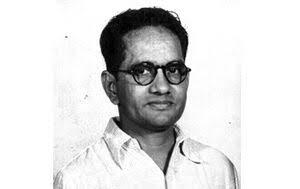
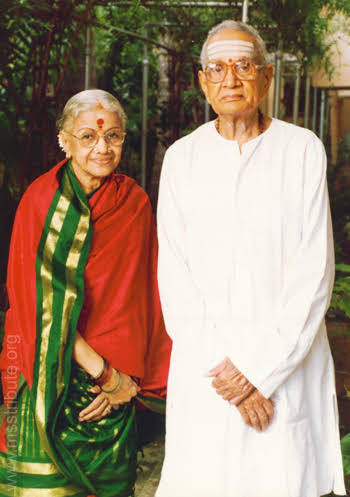
R. Krishnamurthy, better known as Kalki, was a Tamil writer, journalist, poet, critic and Indian independence activist who wrote under several pen-names like Tumbi, Tamil Teni, Karnatakam, Langulan, Agastyar, Ra Ki, Yaman, Vivasayi, Petron, Guhan, Tamil Magan, etc. but what captured his readers' fancy is the pseudonym 'Kalki'.
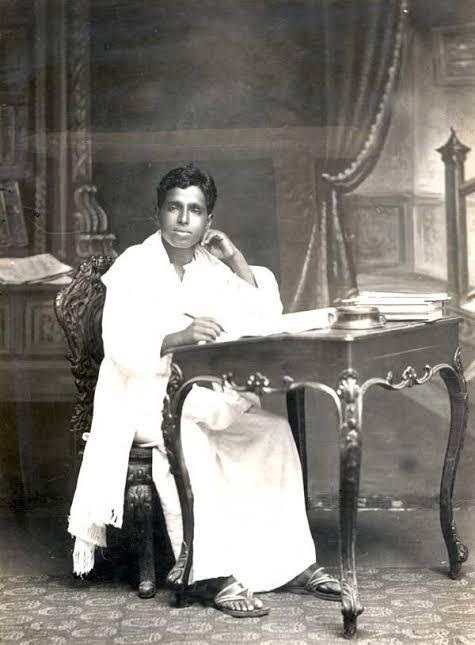
T. Sadasivam and R. Krishnamurthy worked at Gemini Vasan's (who owned the legendary Gemini Studios as well) 'Ananda Vikatan' in 1930s but both left the magazine in the late 1930s, due to personal (Sadasivam's marriage with MS was scandalous for the times) and political (Vasan often got into trouble with the British government due to Krishnamurthy's works) reasons.
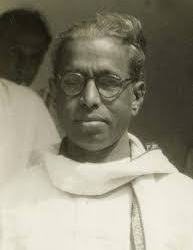
From T. J. S. George's M.S Subbulakshmi: The Definitive Biography :
Sadasivam must have admired his own luck at that point. For he had not only the most marketable literary property at his disposal but also the most valuable musical property as well . . . With Rajagopalachari giving his approval to the idea, all three were inspired to take the plunge.
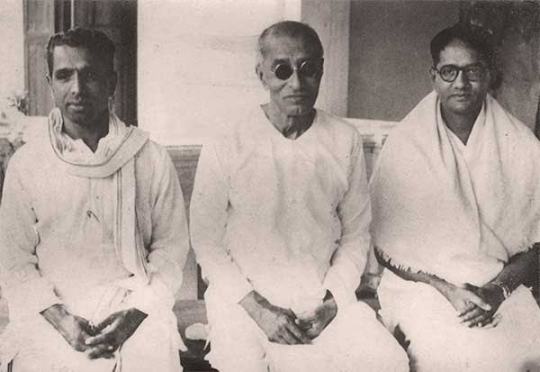
Krishnamurthi, Rajaji, Sadasivam
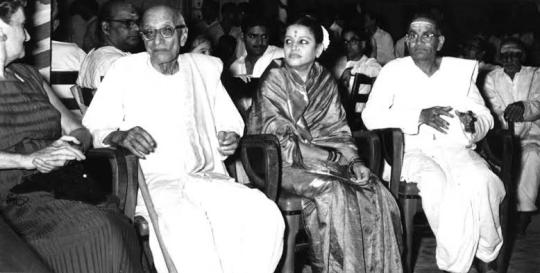
Rajaji, M S Subbulakshmi, Sadasivam
The name of the magazine suggested itself. Krishnamurthi’s writings had spread his pen name ‘Kalki’ so far and wide that Kalki as a magazine title would have the priceless advantage of instant recognition. That indeed turned out to be the case. Not only the originator of the pen name but also the manager-proprietor too would henceforth be identified by the magazine’s name; they would always be known as Kalki Krishnamurthi and Kalki Sadasivam.
Thanks to MS’s film successes, he found many a wealthy financier knocking at his doors ready to invest in her. But Sadasivam was not open to their ideas; they had to be open to his. Such a stipulation kept potential investors at bay until a film director named Y. V. Rao came along. His idea sounded preposterous . . . He would make up the shortfall in the Kalki capital, he said, if Subbulakshmi would act as Narada in a film he was planning to make, titled Savithri. Sadasivam felt scandalized. MS as a male character!
For Rao that was precisely the point. MS in male attire would act as an irresistible magnet for the masses . . . After holding discussions with Rajaji and Krishnamurthi and after making a few teasing references to the idea in conversation with MS herself, Sadasivam said yes to Rao . . .
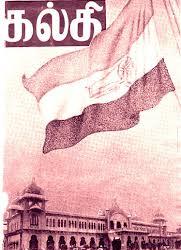
The first issue of Kalki
It took no time for Kalki to make a mark. That period was characterized by tremendous turbulence as a result of the war in Europe and Asia and the independence movement in India entering decisive phases. . . . Every day was a news day. The public appetite was keen for both incisive political commentaries and elevating literary works. Kalki Krishnamurthi’s pen satisfied the popular taste. Sadasivam’s managerial prowess found new inspiration in proprietorship. Combining creative credibility with entrepreneurial vitality, Kalki quickly grew into a part of Tamil history. Krishnamurthi, Sadasivam and Subbulakshmi, with Rajagopalachari hovering as a ‘presiding deity’, symbolized the vanguard of a virtual cultural renaissance in the Brahminic world of Madras. It would reach a peak with new historical novels appearing in a serialized form in the pages of the magazine—Ponniyin Selvan and Sivakamiyin Sapatham.
Krishnamurthy's daughter Anandi was married to Sadasivam's nephew Ramachandran and Sadasivam's daughter Vijaya was married to Krishnamurthy's son Rajendran.
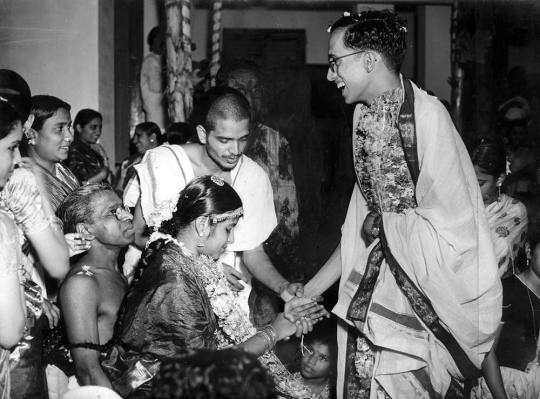
Krishnamurthi, Anandi (sitting on his lap) and Ramachandran
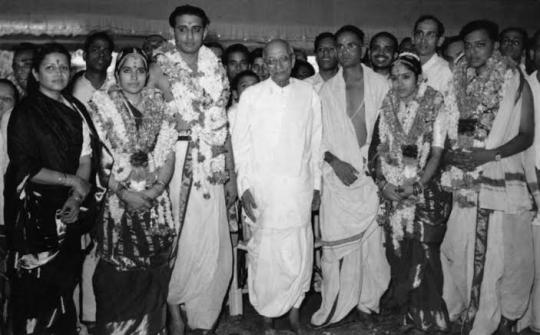
MS Subbulakshmi, Sadasivam's elder daughter musician Radha with husband Viswanathan, Rajaji, Sadasivam, younger daughter Vijaya with her husband Rajendran
@willkatfanfromasia @favcolourrvibgior @celestesinsight @sampigehoovu @ambidextrousarcher @sakhiiii @whippersnappersbookworm
26 notes
·
View notes
Text
Welcome to the Dream World!
I’m your host, Francis Mathers!
This blog is for all my thoughts and feelings as well as any silly posts I see <3
————————————
————————————
Meet the host-
Heya! I’m Francis <3
You can call me that, or some of the other names i respond to are Spooky, Charlie and ofc Krueger!
Frankie is a nickname reserved for close friends and family. if you don’t know me irl and aren’t my online sibling, you don’t have Frankie privilege
I’m 16 years old, my birthday is December 30th
I’m born and raised in Ireland! i’m super fond of my country. I’m from the North, but i do NOT consider myself British. Toichfaidh ár lá my friends.
I’m unsure of my gender and sexuality rn :’3 but not picky with any pronouns. My preference is They/She
I’d love to be your friend :3
————————————
————————————
My interests-
• A Nightmare on Elm street (obv)
• I also like other horror movies, especially slasher movies like Halloween, Psycho, Texas chainsaw massacre, Friday the 13th and Scream
• I like a few horror games too! Dead by daylight is my favourite, i’m struggling on resident evil 💔 i also like indie games like fnaf, bendy, baldi’s basics, ddlc, chzo mythos and mouthwashing! i intend to get into limbo soon
• I love love love consumer fireworks! especially salutes and extra especially cherry bombs!
• History! The Great War/World War 1 is my main thing but i’m also interested in 1930’s America, Irish history, and Tudor times.
• I LOVE EMINEM !!! My all time favourite music artist <3 i also like Sabaton, Hollywood undead, lil darkie, Nessa Barrett, Billie Piper, Frank Sinatra, 6arelyhuman, Green day, and They might be giants <3
• Doctor who, but specifically the ninth doctor’s season. it’s just as important to me as A Nightmare on Elm Street. i’m working on a secondary blog that will just be for me to yap/vent/talk about writing/whatever else. Nine should have got more than one season and i WILL NOT HEAR OTHERWISE
————————————
————————————
Other things about me!
• I am diagnosed, self-diagnosed and/or suspected to have: BPD, HPD or NPD, ADHD, Schizoaffective disorder, Bulimia, Depression, Anxiety and Selective mutism!
• My fp situation is a bit odd rn. i have one but i also don’t? i’m not over him but he hates me.
• I am scared of: Forgetting things, clowns, ghosts, hospitals, bugs and loneliness :[
• I am plural! this blog is friendly to systems and alters of all origins!
• On that note, i am of mixed origins! but i just say endogenic for simplicity
• I experience hallucinations, delusions and paranoia. pretty please be patient !
• My favourite colours are purple and pink
• I have a playlist of songs that i regard as ‘my songs’ for a handful of reasons. Check it out!
————————————
————————————
Why Freddy Krueger?
�� Great question! I chose Freddy because my sister exposed me and my older brother to horror movies really young. i was 7 when i first watched A Nightmare on Elm street. Freddy was my imaginary friend as a kid, and so in my head was there for a lot of my life.
• “But isn’t he a pedo?” Nope! Freddy was not a pedophile in the original series, that fact was introduced in the 2010 reboot, which i do not particularly care about. i like the original Freddy :3
————————————
————————————
DNI list-
• Pedophiles, ONLY if you act on it. i am fully accepting of paraphiles, it’s not your fault. if you act on it though, you’re scum. fuck you.
• Anti-endos, syscourse etc. i’m not about that shit. just block me and move on.
• Radqueers, terfs, any form of exclusionists. nope you yucky
• Just bad people. i want good vibes only!
- see here: bad people does NOT include
paraphiles, any nsfw blogs, ageres, any
mental illnesses INCLUDING
NARCISSISTS*** or anything of the sort.
there is nothing wrong with you or what you
do. you’re all human.
————————————
————————————
my others blogs
————————————
————————————
“Whatever you do... don't. fall. asleep.”
5 notes
·
View notes
Note
William the Nurse? Fallfest Theory Part 2
So, after my last Ask, I’ve been thinking about the Carnival Nurse. It’s interesting that she only appears in one game mode, the Patch Up for Helpy. Furthermore, it’s interesting that the animatronics in this game mode are Lefty, Scrapbaby, and Pig Patch (and Helpy, but he’s not directly important).
TLDR: What if William Afton was a medical professional from the UK, who came to the US seeking a new entertainment profession, and the Pig Patch mini game in Help Wanted 2 is a symbolic retelling of his medical experiments of children at the Fallfest Carnival?
**For a theory refresher**:
- Fallfest was being run by Mrs. Afton’s family (before she was an Afton, so I refer to her as Clara for convenience) for generations, possibly since the 1930’s with the Fredbear singing show, with her also doing ballet tight-rope performances.
- Henry Emily was working as an engineer for the carnival attractions, likely creating Carny and Mystic Hippo, alongside the musical melodies and Fazband.
- William Afton was a British man who immigrated to the US to pursue the entertainment industry (hence why all his children grew up with British accents). He would help Henry create the characters of the musical melodies, mascot outfits, pring Bonnie and Fredbear, and the Fazbear characters (who we see eventually play at Fallfest 1983 according to the HW2 crane game).
Back to Carnival Nurse. It’s interesting that she is... well, a *carnival nurse*, in the Pizzeria Simulator location. In a game mode that has carnival themed characters (Lefty is just reskinned Carnie, Pig Patch is a musical melody member of the Carnival, and Scrapbaby is a clown, and we know that William Afton built two businesses based on circuses).
[Side note: FuhNaff pointed out that the Silver Eyes novels had mentioned William and Henry having books on the Circus]
It’s also interesting that we don’t actually *know* what William Afton was doing in the UK before he moved to the US. I say he came to the US because he wanted to enter the entertainment industry… but what if that wasn’t what he was doing before?
Gibi postulates that William Afton only thought about the mysteries of the human body after studying yoga gurus that were mentioned in FNAF 1 in hidden sounds, which is where he learned about the idea of combining metal and flesh for remnant.
I don’t disagree… but I think William has ALWAYS been interested in the human body. What if he was a medical professional in the Uk and used his talents here?
Because, beyond working as a Mascot performer and businessman with Henry and Clara, William could possibly have been a nurse or doctor AT the Fallfest Carnival.
It makes a certain amount of sense for how he became a genius with experimenting on children, not just in stuffing them into suits, but in creating technology that targets their minds (nightmare experiments) and in trying to recreate human physiology (Sister Location faces we see in the main room).
We always assumed his experiments started with his own kids, but what if he actually took an interest in the kids whom Helpy represents? The injured ones who were sent to his medical tent.
The carnival nurse voice lines are very interesting, because they are all easy ways for William to pick up unsuspecting children to experiment on.
What is even more damning is that these injured children actually stop being “injured” at some point: general neglect, parental neglect, and “unclassified trauma”.
What does **THAT** mean? Unclassified trauma???
What I think it means is that William slowly went from treating injured children to grabbing and sedating any child who was vulnerable with the 1970’s equivalent of the gas mask we see in Help Wanted 2, possibly just outright grabbing a kid who was alone in the case of “unclassified trauma”. Possibly as his Spring Bonnie mascot character…
As I’m typing this, a dark realization occurs.
Helpy, screaming as he makes too much noise, attracts “unwanted attention”.
What if, symbolically, this is meant to express how much work William was doing to avoid having his various carnival colleagues from noticing that his medical treatments were… morally unorthodox (aka cruel and unusual).
I don’t expect this to be 100% accurate, but it could possibly answer a lot of potential Fallfest questions.
It would rely on a lot of information we don't have yet but it's an interesting idea
#fnaf#five nights at freddy's#help wanted 2#fnaf help wanted 2#william afton#henry emily#fnaf helpy#helpy#answered asks
14 notes
·
View notes
Text
Swing Sweet Cheeks Swing
(TW: 1930’s typical violence, gun violence, and some blood)
The Inspector looked over the booming speakeasy. The echoing sound of jazz music and cigarette smoke filled the air, her ears, and lungs. She twirled her fingers around the string of pearls she was wearing, watching the guys and girls twirling around, a pang of envy in her chest. She wished someone would dance with her like that, but due to her job, she didn't have time. And none of the guys in the precinct really catch her fancy. Her heart ached for someone to sweep her up and twirl her around the room.
She took another drink of her cocktail, and saw something out of the corner of her eye. The Inspector could wear she saw a fan of green feathers to her right, and she turned to look at what caught her attention. The Inspector looked up to see a man smiling at her, he had dark blonde hair that was swept back from his handsome face. He was wearing an emerald green, pinstriped suit with a black tie. His eyes were also green, though more of a spring green compared to his suit.
The green man noticed her staring at him and gave her a cheeky grin as took a glass of dark liquor. “See something you like, Sweet Cheeks?” His accent was British, the fancy kind she heard on the radio.
She glanced away, her face burning with embarrassment at being caught staring. “Just noticed that your tie is crooked.”
This seemed to catch the pretty man off guard and he glanced down to fix his tie. “Oh! My goodness, how did that happen? Thank you for catching that.”
She nodded, taking another sip of her drink and watching the dancing, her leather dancing shoe tapping against the leg of her stool.
“Itching to get on the dance floor, gorgeous?”
She jumped at his voice, he somehow got closer to her, his green eyes boring into her own.
"Why don't we go out onto the floor and have some fun? You look bored out of your mind and should enjoy your evening."
The Inspector looked at him with uncertain eyes but took his hand and he dragged her out onto the dance floor. She had to admit, the Green Man could cut a rug with the best of them, but the inspector was no slouch either on the dance floor.
The two of them twisted, twirled, and jumped, laughing happily jittered and two-stepped. He laughed quite a bit throughout the evening. He dragged her back to the bar after they finished their dance, getting some fresh drinks to quench their dry throats. The Inspector giggled and leaned against the Green Man's arm, listening as he spoke about something she couldn't even really remember.
The two of them moved a quieter corner of the speakeasy to talk. He draped an arm around her shoulders, looking at her with eyes that seemed to look into her soul.
She wasn't sure if it was her alcohol talking or if she was just desperate for someone to hold her but she was so tempted to kiss this man. As she leaned forward slightly, there was a loud bang as the hidden door broke, several men with tommy guns.
The Green Man pulled the Inspector under the table to hide from the bullets. The inspector growled and looked at the bartender, an informant who knew her and why she was in his establishment. He nodded and slid a pump-action shot-gun.
She looked at the Green Man, her eyes glinting like glass. "Stay here, I can handle this." She leaned forward and pressed a kiss to his lips before popping up from the table and shooting at the men. She knows who they are, a local mafia her precinct was trying to take down. They fell like flies with each shot, blood staining the wooden floors.
The Green Man looked at the Inspector, his eye glittering with awe as she yelled at the people to run out the back, and throughout the chaos, she stood like a boulder in a storm. As she pushed the last of the people out, a shot clipped her in the shoulder.
The Inspector jerked awake, gripping her shoulder that she could swear she was shot in. She sighed and ran her hands through her hair, trying to calm her breathing. She tried her bring back more memories of that dream, especially with the Green Man but... they were slowly drifting away.
7 notes
·
View notes
Text
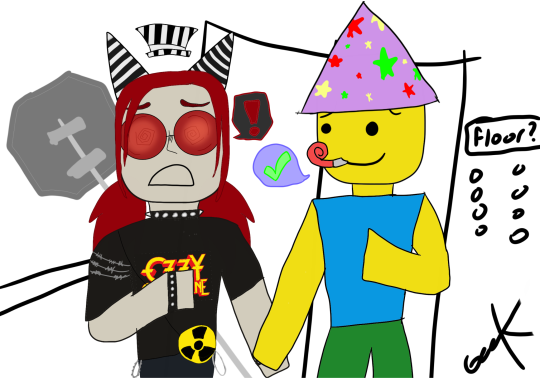
HI HI JI HI *SHOWS YOU MY ROBLOX OC AND A LIL DOODLE OF HER AND POOB I MADE*
Also OC HCS IN BELOW
-She's part demon (no she is not 'AlL-PoWErFUl'. She's weak to religious objects and her demon archetype is an imp.)
-Personality wise, she's mainly inspired by Pinkie Pie, but she has some aspects of Dan from Dan VS, Glam from Metal Family, along with a few songs like 'Fine' by Lemon Demon
-Knows vaguely that Gnarpy is a space commander, but also... ✨Kitty✨. She isn't all that scared of xem because she more so goes ":0 *G4SBP* K1TT3333HHHHH!! :3" (she's only ever scared if xe threatens her)
-Voice Claim; Kinda high pitched, energetic, British accent (think of like pinkie pie but british)
-Texts in all caps and replaces numbers with letters, and O is replaced with Ø. Basically texting is a mix of 2000's "R4WR XD" and Terezi from Homestuck
-Sees Bive as like a best friend (Bive sees Cass more as an acquaintance rather than a friend, however)
-Speaking of which, Cass sees almost EVERYONE as a friend in some way
-Likes classic rock, hyperpop, generally any music that sounds good to her
-Carries around a stop sign she stole. YES. SHE DID STEAL IT. Just plucked it out of the ground one day (it's support was rusting a lot!)
-The barbed wire on her arm (which i forgot to draw on her ref on the right) is fake! It's just aluminium foil, metal wire, and some silver glittery pipe cleaner! (although sometimes she confuses her fake barbed wire for real barbed wire... A lot of hospital trips happen)
-Self conscious abt her eyes (nothin wrong with em! They look kinda like 1930-ish style cartoon eyes :3)
-They get anxious if an elevator stops randomly and has to hold someone's hand. If not, they just tap their fingers/hands together awkwardly
-The look was just something I came up with around 2021 or 2022! I wanted to go for black + a few colors + some silliness!
-Autism and ADHD
-LOVES making explosives with fireworks, gunpowder, and a few other things like paint and glitter. Expect colorful pipe bombs in your mailbox
-Her face changes emoticons for emotions! shell' be :D happy! Or :( sad... Or even O□O SHOCKED!
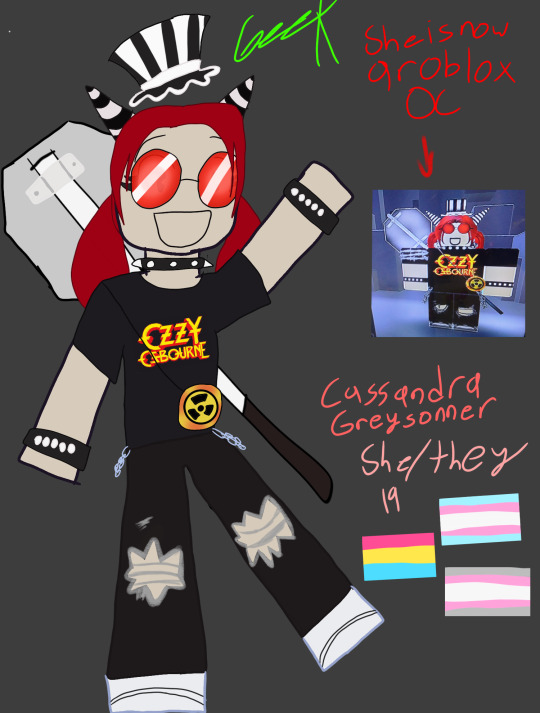
#regretevator poob#regretevator#roblox#roblox oc#idk if i posted this already#i forgot#geek says things#geek rambles#geek doodles#geek speaks#geek draws things
8 notes
·
View notes
Text
Matthew Ridgers interview with my Mexican Grandmother (NANA)

I interviewed my grandmother on my moms side of the family. She is Aurelia Ruiz Hernandez today she is 72 living in Lakewood California was born and raised in Mexico. She lived in Baja Rosarito. She lived in a nice house near the water with her parents and her siblings.
She has 12 other siblings although she lived with 8 of her siblings. Some of the other children have moved out of the house or back to America.
Her Dad Valentino Ruiz was from Michoacan Mexico, and her mom doesn't know where she was born. She told my nana that she remembers going with her dad across the border to the USA in Texas. Her mom grew up in America and met her husband Valentino in California when he had just moved there. They lived in Southern California and had 4 kids. Her parents were living a happy life until the great depression came in the 1930’s making them move back to mexico. When they moved back, they bought a ranch and a house near the beach. Their kids having their American citizenship they wanted to live near the border and decided to move to Rosarito Mexico. Her dad was a farmer having many animals and herbs on his ranch. With her parents living in America, they knew how to cook many different types of dishes like pancakes along with the traditional Mexican food. Her mom did all of the cooking besides the dad making the eggs in the morning.

(Rosarito Beach postcard)
My grandmother's childhood consisted of waking up in the room she shared with her sister Genie and getting ready to walk to school. It was a few miles walk to her school which required a uniform. In school she liked learning about history and science, but she enjoyed playing at recess even more. She enjoyed playing sports like soccer, volleyball and hopscotch. On the weekends she was able to wear her normal outfits with her colorful dresses and heels. Her house was right next to the beach and would go swimming all the time. They would all walk down to the beach from their house. Her and her friends would be out all day going on adventures. One of their favorite things to do was ride horses together. She says it was completely different from now being outside all day and not being around any screens. In the nighttime she would do things with her family and go dancing where a band would play orchestra songs. If not dancing, she would go to the theater and watch films. On the long breaks like the spring breaks and such she would visit her siblings living in America. They lived in Santa Ana and Orange County. This is where my grandmother would go shopping and really get an influence of American Culture. She loved to shop in Orange County and in San Diego. America is where she also got her love for music. She really liked to listen to rock n roll. In this time in America, it was a time that was called the “British Invasion” for music. With the likes of The Beatles and Rolling stones being very popular. This is where her love for these bands come from.
As a teenager she saw a better opportunity in America so that's where she went. She moved to America first living with her siblings while she saved up money for her own place by cleaning houses and babysitting. She met my grandfather and a few years later my mom was born. When my mom was a child, her dad passed away. My grandma remarried a few years after and had one more kid, my aunt Michelle. They lived in Huntington Beach enjoying the wonderful weather and beautiful beaches.
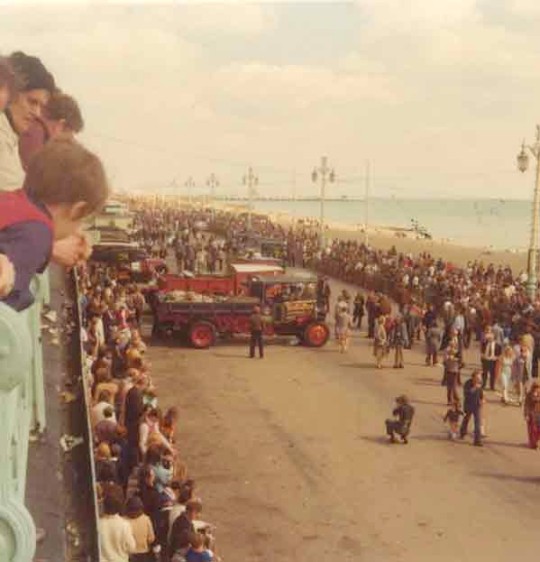
(Picture of Hunnington beach in the 1970's)
2 notes
·
View notes
Text
The industry closet: queer pop from Little Richard to Frank Ocean
Gay and bisexual singers have pushed for progress since the 1920s. Has the tide finally turned, or do commercial pressures still persuade artists to pander to straight audiences?
The Guardian - by Martin Aston (Oct 11, 2016) - saved
There’s a moment in Frank Ocean’s music video for Nikes where it’s clear the naked flesh on display is female; breasts and buttocks proliferate in closeup, while the shots of male torsos are mostly fleeting, bathed in shadow.
In a sense, this mirrors Ocean’s public persona. Before the world heard his 2012 debut, Channel Orange, and the three songs on it featuring a man as the love interest, an unexpected Tumblr post explained that his first true love was male, not female. His statement didn’t state explicitly that he was gay (though the lines, “My mind would wander back to the women I had been with. The ones I cared for and thought I was in love with,” suggested as much). His new album, Blonde, meanwhile, has just the one song – Good Guy, about a failed hook-up in a gay bar – that uses the male pronoun. If Ocean is a perfect poster boy for the gender-fluid era, his videos suggest a commercial need to provide images that straight audiences can relate to.
Last summer, Years & Years frontman Olly Alexander pondered the same subject when promoting the trio’s album Communion. “I’d like to hear a gay artist express their sexuality in a really open way,” he said. “That’s something I’ve sort of tried to do a little bit on this album, but to be able to talk about sex is possibly new for gay artists, so I’d like to see that in the mainstream.” If anyone has the chance, it’s Alexander. But that “little bit” amounted to male pronouns in just two songs, something that Alexander called “a small triumph”. Why not go for the bigger triumph, over a whole album? Would his fanbase be only one in 10 – the traditionally quoted ratio of queer to straight – if he did?
In any case, talking about sex is hardly new for gay artists. They were doing the dirty in song almost 100 years ago, in 1920s Harlem, when blues singers such as Ma Rainey and Bessie Smith sang about same-sex affairs. Even gay men, less documented than the women, took advantage of a brief new social permissiveness following the first world war – George Hannah wrote and sang Freakish Man Blues in 1930. Away from the blues, there was the first gay pride anthem in 1920, Das Lila Lied (aka The Lavender Song), written by Berlin-based duo Spoliansky and Schwabach, through to the stars of the so-called Pansy Craze, popular in New York from 1930. From this came Gene – sometimes spelled Jean – Malin, whose 78rpm single I’d Rather Be Spanish Than Mannish predated Noël Coward’s none-more-camp delivery and innuendo. But the Pansy Craze was quickly snuffed out when 1929’s economic crash snowballed into the Great Depression, unleashing a new wave of religious bigotry and social repression.

Musician Little Richard peers out of a curtain circa 1957. Photograph: Michael Ochs Archives/ Getty Images
It’s said that the 20th century’s two most liberal decades were the 20s and the 70s; in between, McCarthyism unleashed a fresh era of homophobia, and the British establishment fought just as hard to discourage social tolerance and progress. If only Little Richard’s original lyric to Tutti Frutti – “Tutti Frutti, good booty / If it don’t fit, don’t force it / You can grease it, make it easy” – wasn’t censored by his producer, Britain would have enjoyed a top 30 ode to anal sex some 30 years before Frankie Goes to Hollywood’s Relax. Given it wasn’t until the Sexual Offences Act of 1967 that homosexuality – only for those aged over 21, and only in England and Wales – was decriminalised, and that the gay liberation movement didn’t get going until after the Stonewall riots of 1969, it’s not surprising that singers, actors or musicians didn’t want to advertise their same-sex feelings.
Yet even post-Stonewall, the decades of shame and secrecy were only effectively counteracted by David Bowie, a married father. Still, a few Bowie songs (The Width of a Circle; Queen Bitch; John, I’m Only Dancing) had gay subplots with male pronouns. The British singer who came out first (in the London Evening Standard in 1970), Dusty Springfield, never sang about her love for a woman in her closeted lifetime. Uncompromising gay singers such as Michael Cohen, who mined the pained confessional style of James Taylor, sold pitifully few records. Gay men sought disco, in a celebratory mood, rather than remind themselves of the closet they’d only recently vacated. Even then, gay men preferred female divas to express their feelings.
Finally, the Tom Robinson Band’s (Sing if You’re) Glad to be Gay was a top 20 hit in 1978. Though queer trailblazers Marc Almond and Boy George initially hesitated to say they were gay, and avoided male pronouns, Frankie’s Relax – the video’s leather-bar orgy was a first – and Bronski Beat’s Smalltown Boy – the video’s portrait of cruising and homophobia were firsts, too – were landmarks, gay lib in full flow.
However, this wave was almost immediately curtailed not by economics, but by a virus. As Aids cut a swath through the gay community, the Beastie Boys and Guns N’Roses ramped up the homophobia across several zillion-selling albums. If Aids hadn’t existed, we might have unleashed a horde of queer mainstream pop stars – though the irony was, Aids also helped the cause, by humanising the gay community, and unleashed declarations of support from mainstream straight performers. The likes of KD Lang, Melissa Etheridge and finally Michael Stipe came out, and the musical closet started emptying fast.
youtube
Watch the video for Bronski Beat’s Smalltown Boy – video.
Come 2016, Will Young, Beth Ditto, Adam Lambert and Sam Smith, alongside Olly Alexander, are mainstream pop stars whose interviews, and sometimes their music videos, are unequivocal. Miley Cyrus has widely promoted polysexuality and support for transgender rights, and even hip-hop had shifted, with rappers such as Young Thug promoting androgyny, and queer rapper Mykki Blanco pushing himself toward the front, while trans hero – and reality TV star – Big Freedia featured in Beyoncé’s Formation video. If Eminem came out with yet another homophobic slight, the public reaction would now be more critical than tolerant.
Let’s not forget John Grant, the most male-pronoun-wielding singer of all, who recently sold out London’s Royal Albert Hall. Rostam Batmanglij, formerly of the chart-topping Vampire Weekend, is equally out. Country music, another traditionally homophobic genre, has numerous popular gay and lesbian artists working out of Nashville, from Brandy Clark to Shane McAnally. Following on from heavy metal kingpin Rob Halford, even death metal and grindcore have their openly queer figureheads. Of course I would be glad if Frank Ocean and Olly Alexander’s – and Sam Smith’s – next batch of songs focused on the “he” and not “you”, but perhaps actions speak louder than words. In other words, the love that dare not speak its name, as Oscar Wilde phrased it, doesn’t have to sing to make itself heard.
1 note
·
View note
Video
Marianne Winkelstern by Truus, Bob & Jan too! Via Flickr: German postcard by Ross Verlag, nr. 4841/1, 1929-1930. Photo: Alex Binder, Berlin. German actress Marianne Winkelstern (1910-1966) became well known as a ballerina in Germany and England. In Germany she appeared in some silent films and early sound films. Maria Anna Martha Winkelstern was born in 1910, in Berlin, Germany. She had two sisters, Eva and Liselotte. Her father, Adolf Winkelstern was the owner of a successful import firm of caviar. He was the official supplier of the German Kaiser. He also owned Hotel Viktoria, a summer hotel in Misdroy auf Wollin. After 1916 business went bad, but Marianne grew up in a sheltered family environment. Her father stimulated her to become a ballet dancer and at five she already followed dance classes by ballerina Evi Peters and also had private dance tuition. As a nine year old she already performed at ballet evenings, organized by her father. In 1926 she was discovered by Eric Charell in the Dayelma-Ballett at the BerlinWintergarten. He engaged her for his Großes Schauspielhaus, where she performed in the operetta Madame Pompadour during the 1926/1927 season. During the next years she was a member of the Schauspielhaus ensemble. She made her film debut opposite Harry Liedtke in 1928 with Der Faschingsprinz/The Carnival Prince (1928, Victor Janson), and also could show her dancing capacities. This debut was soon followed by film appearances in Die Zirkusprinzessin/The Circus Princess (1928, Rudolf Walther-Fein) again with Harry Liedtke, Der weisse Teufel/The White Devil (1929-1930, Alexandre Volkoff) starring Ivan Mozzhukhin, and the short film Die Hochzeit des Faun/ (1929, Peter Paul Brauer) with Max Tapis. At the beginning of the 1930's Marianne Winkelstern took part in the sound films Liebeswalzer (1929-1930, Wilhelm Thiele) starring Lilian Harvey and Willy Fritsch, Nur Du/Only You (1930, Hermann Feiner, Willi Wolff), Die Große Attraktion/The Big Attraction (1931, Max Reichmann) opposite Richard Tauber, Mein Herz sehnt sich nach Liebe/The Clairvoyant (1931, Eugen Thiele) opposite Erno Verebes, and Ein Kuss in der Sommernacht/A Kiss in the Summer Night (1933, Frans Seitz sen.). Her last film was the short musical Kannst Du pfeifen, Johanna?/can You Whistle, Johanna? (1934, Johannes Guter) with Harald Paulsen. Erik Charell invited her to come to London to appear as a ballerina in the musical revue Casanova at the Coliseum. There she met her future husband from the British upper classes, and soon retired. Marianne Winkelstern died of lung cancer in 1966, in London. Sources: Thomas Staedeli (Cyranos), Wikipedia, Filmportal.de, and IMDb.
#Marianne Winkelstern#Marianne#Winkelstern#German#Actress#European#Film Star#Schauspieler#Film#Cinema#Cine#Kino#Ballet#Sepia#Silent#Vintage#Postcard#Postkarte#Carte#Postale#Cartolina#Tarjet#Postal#Ansichtkaart#Ross#pointe#ballerina#flickr
1 note
·
View note
Text
Tipu Sultan The Saga of Mysore’s Interregnum (1760–1799)
Publisher:Vintage Books
| Author: Vikram Sampath
| Language: English
| Format: Hardback
₹1,499 ₹899 Save: 40%
Releases around 28/10/2024

Ships within:
This book is on PRE-ORDER, and it will be shipped within 1-4 days after the release of the book.
Note : Price and release dates of pre-order books may change at the publisher's discretion before release.
In stock
ISBN: 9780670094691
Categories: History, Preorder
Page Extent: 984
Over two centuries have passed since his death on 4 May 1799, yet Tipu Sultan’s contested legacy continues to perplex India and her contemporary politics. A fascinating and enigmatic figure in India’s military past, he remains a modern historian’s biggest puzzle as he simultaneously means different things to different people, depending on how one chooses to look at his life and its events.
Tipu’s ascent to power was accidental. His father Haidar Ali was a beneficiary of the benevolence of the Maharaja of Mysore. But in a series of fascinating events, the Machiavellian Haidar ran with the hare and hunted with the hounds; he ended up overthrowing his own benefactor and usurping the throne of Mysore from the Wodeyars in 1761. In a war-scarred life, father and son led Mysore through four momentous battles against the British, termed the Anglo-Mysore Wars. The first two, led by Haidar, brought the English East India Company to its knees. Chasing the enemy to the very gates of Madras, Haidar made the British sign such humiliating terms of treaties that sent shockwaves back in London.
In the hubris of this success, Tipu obtained the kingdom on a platter, unlike his father, who worked up the ranks to achieve glory. In a diabolical war thirst, Tipu launched lethal attacks on Malabar, Mangalore, Travancore, Coorg, and left behind a trail of death, destruction and worse, mass-conversions and the desecration of religious places of worship. While he was an astute administrator and a brave soldier, the strategic tact with opponents and the diplomatic balance that Haidar had sought to maintain with the Hindu majority were both dangerously upset by Tipu’s foolhardiness on matters of faith. The social report card of this eighteenth-century ruler was anything but clean. And yet, one simply cannot deny his position as a renowned military warrior and one of the most powerful rulers of Southern India.
Discover the captivating life of Tipu Sultan in Tipu Sultan: The Saga of Mysore’s Interregnum (1760–1799), set to release in October in India. This new book, meticulously researched by historian Vikram Sampath, explores the complex and controversial legacy of one of India’s most powerful rulers. From his military conquests during the Anglo-Mysore Wars to his influence on Southern Indian history, this book provides an authoritative account of Tipu Sultan’s reign. Perfect for history enthusiasts and scholars alike, this upcoming release promises to be a must-read!
About Author
Bangalore-based historian Vikram Sampath is the author of seven acclaimed books, including Splendours of Royal Mysore: The Untold Story of the Wodeyars; My Name Is Gauhar Jaan: The Life and Times of a Musician; Voice of the Veena: S Balachander: A Biography; Women of the Records and Indian Classical Music and the Gramophone: 1900-1930. His latest books, published by Penguin Random House India, are the two-volume biography Savarkar: Echoes from a Forgotten Past and Savarkar: A Contested Legacy, 1924-1966. Both the volumes have gone on to become national best sellers.
Read More :
Website : https://padhegaindia.in/
Telegram : https://t.me/padhegaindiainitiative
Youtube: https://www.youtube.com/@PadhegaIndiaInitiative
Instagram : https://www.instagram.com/padhegaindia/https://x.com/PadhegaIndia_?mx=2
Facebook: https://www.facebook.com/PadhegaIndia.PI
#Book Preorders India#Upcoming Book Releases#Preorder New Books#Books Releasing Soon#New Book Releases India#Preorder Books Online#Latest Book Preorders#Books Coming Soon India#Buy Upcoming Books#Book Release Preorders#New Arrivals Book Preorders#Preorder Exclusive Books#Upcoming Book Preorders India#Book Launch Preorders#tipu sultan#tipu sultan online book#tipu sultan novel
0 notes
Text
Defining the 4 genres of blues music
urban blues
urban blues will have been performed in cities with significant african american populations, like memphis, detroit, chicago from the 1930s
more codified and elaborate as the performer had to adapt to a broader audience aesthetic
vaudeville blues singers were popular in the 1920s
unusual keys would be used to reach people at the back of a room, and create surprise
common themes: migration/dailylife/ social consciousness/ travel/ war/ segregation/ relationships/ activism and politics
3 major urban blues categories: sophisticated version of country blues / amplified country/ amplified jazz-inflected blues
1930s sophisticated country blues
many jazz-inflected bands toured and performed in clubs and concert venues throughout California south and south-west
1950s and 60s, urban blues would tour europe and uk, which influenced formation of blues rock groups like led zeppelin and eric clapton and the paul butterfield blues band and dire straits
almost all urban blues songs were vocals with instrumentals accompniment
followed a 3-line verse form, where the first line was repeated in the second then the thought was repeated in the rhyming third line
most verses began with a quatrain taking up the same amount of time as the first line of the standard 3line verse
the sophistiocated country blues would be backed by a guitar or piano
denser yexture and rural blues due to a complex harmony and the vocals would be ligher instead of raspy
amplified post war2 blues would see singers taking more liberties with cries, moans, hollers and melodic elaborations than chicago singers
one guitar would emphasise the rhythm, another would play melodic riffs and figures and included a harmonica too
jazz-inflected blues would have a singer, guitarist with a small jazz band (piano, bass, drums and horns), the vocals would be shouters
urban blues commented on the ups and downs of daily life, protesting mistreatment by lovers and discrimination and economic hardship
country blues
relies on the expressive power of the voice with sparse instrumental accompaniment (guitar or harmonica) which is more improvisatory and freedom than urban blues
the music of day to day life
delta blues
also known as mississippi blues
solo performances accompanied by guitar and relied on techniques like sliding of a bottle neck to blend the notes
melodic phrases on the guitar to respond to the voice in an improvised call and response pattern
song topics: failed romance, sexual escapades and tales of life on the road
high contrast to the classic blues, because this tended to be males singer- guitarists
recording of blues music was curtailed during the great depression
during ww2 traditional blues fell out of popularity
rhythm and blues (rnb)
post war african-american music
leads to white rock music which has been derived from it
a development of the sopisticated urban music which had been developing from the 1930s
large group and small group rhythm and blues
small groups would consist of 5-7 pieces and each would take their turn in the limelight
this influenced the development of rock and roll and there are no hard rules defining them from eachother so much of the music could fit both categories
by the mid 50s, much of the guitar-led electric blues music from chicago and mamphis was rhythm and blues as it appealed to older buyers
by 1960s rhythm and blues had aged with its audience
rhythm and blues has attained a new meaning due to british bands which followed, like the 'beatles' and 'rolling stones' which tended to be mod rock bands calling their work r&b to attract an audience
thoughts:
I now have a better understanding of the categories of blues music and i intend to now research different Belgian beers and beer favours so that i can find a flavour pairing for one of the each genres of beer to be based off of. i hope it will also help with the design of the packaging, looking at which are more sophisticated, what each category sings about in themes and how the music in the background might sound. this will allow me to create a visual correlation with the sound of the music for a unique take on beer packaging and to represent Blegium&Blues bar well.
carnegie hall. “History of Urban Blues.” Timeline of African American Music, timeline.carnegiehall.org/genres/urban-blues. [Accessed 16 Apr. 2024.]
“The Country Blues: Rural Soul Music of the Southern USA.” Smithsonian Folkways Recordings, folkways.si.edu/country-blues-rural-soul-southern-usa/music/article/smithsonian#:~:text=The%20country%20blues%20is%20music. [Accessed 16 Apr. 2024.]
Hope, Annika. “What Is Country Blues?” Music Gateway, 22 Aug. 2019, www.musicgateway.com/blog/music-industry/what-is-country-blues. [Accessed 16 Apr. 2024.]
Gioia, Ted. “Mississippi Delta Blues | Artists, Music, & Facts.” Encyclopædia Britannica, 2019, www.britannica.com/art/Mississippi-Delta-blues. [Accessed 16 Apr. 2024.]
Ward, Ed. “Rhythm and Blues | Music.” Encyclopædia Britannica, 13 Jan. 2017, www.britannica.com/art/rhythm-and-blues. [Accessed 16 Apr. 2024.]
0 notes
Text
FMP: Fairground Artwork & Signwriting. LO1
Easter Week 2
Carters Steam Fair:
Carters Steam Fair is a traditional English travelling funfair with rides dating from the 1890s to the 1960’s. Carters also restore vintage fairground rides and attractions, taking them on tour for all to enjoy. Carters stand out from all other fairs, with their dedication to traditional signwriting and decoration. The collection of rides and side stalls makes Carters the largest travelling vintage funfair in the world, ensuring the preservation of British heritage. Carters also offer creative workshops across their website, something I would definitely do for this project if I had the money!

From their website it is clear that they've taken on Victorian design inspiration across their work, which is something I can see myself doing:
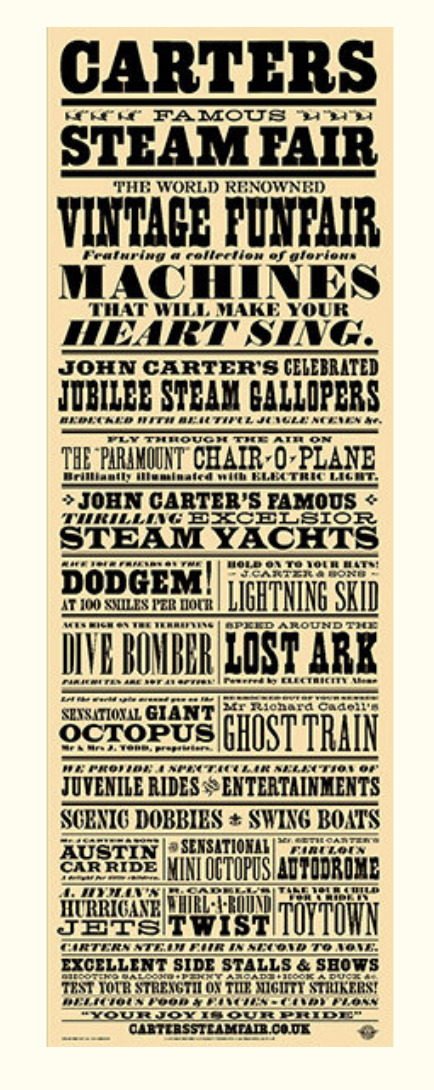

Heritage Crafts:
According to Heritage Crafts, a preservation company patroned by King Charles, fairground artwork currently sits as an 'endangered' practice. It says there are only 8 commercial fairground artists, and no formal training courses, only Carter's course. Amy Goodwin is listed as one of the artists, so it really is that small of a community.
The page provides some interesting history:
Early fairground art styles featured intricate wood carvings, painted banners and exotic jungle and animal scenery.
Gilding is an important feature of fairground artwork, with genuine gold leaf being used in early styles.
The 1930s saw faster, lighter rides appear in fairgrounds, which often featured more uniform Art Deco “jazz” patterns.
After the Second World War booming economic conditions led to showmen increasing the size and grandeur of their equipment, with space travel being a particular favourite.
The 1970s and 80s saw changing tastes with many new rides featuring spectacular airbrushed paintings, often depicting film and music stars, fast cars or sporting heroes.
Today many artists focus on recreating older artwork styles whilst others continue to push boundaries creating new themes.
The page mentions Fred Fowle, who has popped up a lot in my research. Alongside his apprentice Peter Tei, they would become the best known names in the industry.
Carpenter, D. (2023). Fairground Art. [online]. Available from: https://heritagecrafts.org.uk/fairground-art/ [Accessed 27th March 2024]
Fred Fowle:
Fowle was the country’s foremost fairground artist. Once you become familiar with it, his exuberant, three-dimensional style is instantly recognisable.
lettering and images influenced by popular culture – particularly the cinema posters, adverts and American comic books which he loved.
Hall & Fowle’s designs were highly sought after, with the showmen who commissioned them often proving to be extremely demanding clients. The seasonal nature of the industry meant that the bulk of the work had to be carried out in the winter months. It was during this time that he established and refined his signature style, which featured expressive swirls and curvaceous, freehand letterforms.
In the late 1960s, psychedelia entered mainstream pop culture, and this coincided with fairground rides becoming faster and more exciting. Fowle’s work directly reflected both of these developments.
Fowle remained resolutely self-effacing and modest, insisting that, ‘I think the main thing is to please your customer.’
Fairground art often suffers from its ephemeral nature. Unless the ride itself is retired, it tends to get repeatedly painted over with new designs over the years. Many of Fowle’s remaining pieces have been sold to collectors, although there are some well preserved examples on display at Dingles Fairground Heritage Centre in Devon.
Roberts, C. (2013). Painted Thrills and Spills. [online]. Available from: https://www.eyemagazine.com/feature/article/painted-thrills-and-spills [Accessed 27th March 2024]
Reflection, LO4:
From this research it is clear that fairground art consists of a tight-knit community, in order to preserve the craft. In an aesthetic consideration, I lean towards more Carter and Goodwins work as opposed to Fowles. Like the article states, his work fits to a psychedelic theme which is not how I see Hastings.
1 note
·
View note
Text
Genre Research
My chosen track

Although the track I have chosen could fit a multitude of genres, American Sports is primarily synth or glam rock. It is a unique avenue for the band (Arctic Monkeys) as it strays from their typical indie or alternative sound, as tranquility base uses various inspirations from around the 70s or 80s. Although the song remains subtle in its genre influences, clear parallels can be seen between glam rock and their album, of which I have chosen to research. In addition, I utilised glam rock as a general inspiration for the look of my music video, and even the costume of my lead actor taking subtle inspiration from the 70s genre.
Origins
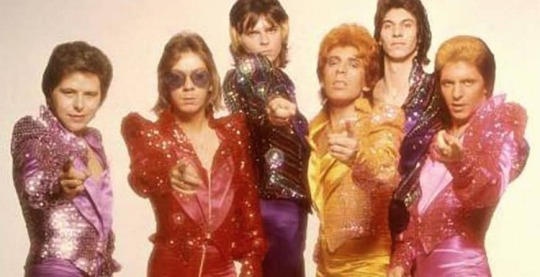
The origins of glam rock stem from the 1970’s, of which artists drew from classic rock and roll form the 50’s, into science fiction, and melded into specific fashions and playing with gender roles. Arguably the most popular leader of the glam rock genre was David Bowie, but the genre is said to have begun in 1971, with T.Rex’s lead singer Marc Bolan performing Hot Love in glitter and satins, and is said to begin the movement. Glam rock was massively influential, with typically younger adults swapping gender roles, with men wearing glitter and makeup and women wearing more masculine clothing. This more experimental style mainly targeted young adults at the time, with its extension from the art rock in the late 60’s paying a large part in what came to be glam rock.
Fashion

Fashion was a huge part of glam rock, arguably more notable than its music. Loud, bright colours and glitter along with men wearing effeminate clothing became the norm, with artists playing to this as subtly or extreme as they wanted. It seemed to be largely influenced from 1930’s Hollywood glamour, with aspects of Victorian symbolist styles and cabaret theatrics even attributing to the extremely unique and flamboyant style. Gender ambiguity is a large aspect of glam rock, glorifying decadence and the very simple aspects of early pop music that preceded it.
Communities

Due to David Bowie’s leadership of the glam rock movement and his development into the Ziggy Stardust persona, the fashion and music of the time can be largely accredited to the UK. This is because Bowie’s music, along with popular bands such as the Rolling Stones, Queen or Rod Stewart, arguably led to highly successful and popular fashion trends throughout the UK as they were mainly British acts, leading to them dominating other pop culture movements occurring at the time. Due to its origins and popularity arising in the 70’s, glam rock typically spread through performance and fashion trends, of which many people and artists take influence from now, most notably Harry Styles, who’s fashion is largely attributed to Mick Jagger and David Bowie, and continues to inspire younger audiences.
TV and Film

A large inspiration for the widely popular “Rocky Horror Picture Show”, glam rock has been so influential in all aspects of media. A multitude of documentary’s have been made surrounding certain glam rock artists that were released in the mid 70’s, including, but not limited to, David Bowie’s “Ziggy Stardust and the piers from Mars: The Motion Picture” and “Gary Glitter’s Remember Me This Way”. “Velvet Goldmine”, released in 1998, is yet another film that delves into the life of fictional glam rock artist Brian Slade.
Radio and TV stations

Although the genre experienced a steady decline in the latter half of the 70’s, David Bowie and other pioneers of the genre still have their music in circulation, even after their death. Although it remains a very niche market, artists such as Harry Styles still keep the fashion aspect of glam rock alive, as well as artists still performing such as the Rolling Stones are keeping certain aspects of the genre in circulation.
Night clubs
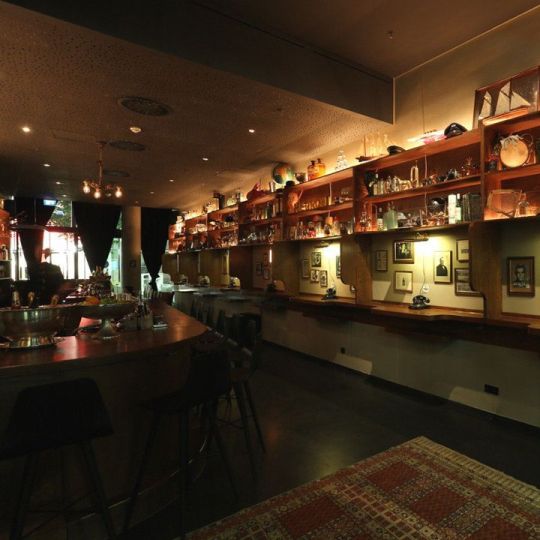
Clubs and bars do keep certain glam rock artists and 70’s songs for certain events, with certain bars (particularly in the UK where the movement was mainly seen) playing glam rock purely to keep the music alive, although it is becoming more and more rare. Most of these bars and clubs are self proclaimed tribute bars, even containing limited memorabilia to pay homage to the late artists that have helped to create such a long standing genre of music, and immensely influential part in fashion.
Activities and Lifestyle

The genre mainly describes a flamboyant lifestyle, whilst relying heavily on the creativity of an artist, with it primarily expressed through clothing and performance and showmanship. It also is a very fun genre to play around with as an artist, with many singers seemingly leading very playful and explorative music videos or live shows.
1 note
·
View note
Text
Film festivals notes 17/10/23
History of film festivals:
Venise was the first film festival in the 1930's
Cannes film festival was set up by the French, British and American's as a rival to Italy.
Around 80% of film festivals have been set up within the last 20 years.
Main 5 parts within film festivals; Production, exhibition, distribution, archiving, training and education.
A-list film festivals: Cannes, Venise, Berlin, Toronto
There are film festivals for nearly every genre and sub-genre. Critic proof films (Hollywood Productions with big names attatched).
Digital technologies have provided greater access to the means of film and media. Over 17 films a week released in the UK cinemas. This increase has created a crisis in curating- an urgent need to filter these productions and connect with audiences.
The international film festival circuit is the first culteral phase in the proccess of global film circulation. Festivals filter the plentitude of film productions and take well-grounded personal taste as the starting point to do so. An essential characteristic of film festivals is an extrodinary alterability. The artistic choice depends on the available and the degree of harvest to gather the crop.
Main stream cinema takes fewer risks, that's one of the reasons sequals and franchises are made. Everyone goes to watch the same films (Barbie and Openheimer). Many films will now have their only theatrical life on the festival circuit...blockbuster culture. The cost of living crisis has made people want to see something their guarenteed to enjoy, people rarely take risks when watching films they've never seen, they don't want to waste time or money.
FIlm festivals have become a unique experience to see smaller films, they are an emersive experience. An alternative way of viewing films and sharing an experience with strangers. Since the advent of the internet in the 1990's and the proliferation of mobile viewing devices in the past decade, film festivals have only grown, in size, in numbers and in variety. All signs suggested that they will continue to do so. The social interaction keeps festivals alive, people enjoy being apart of an audience.
Growth in festival culture, wanting to physically connect through music, books, films etc. These events provide an alternative, a community that is connected through their passion of media.
0 notes
Text
'Oppenheimer review: Cillian Murphy is stunning in explosive epic
Christopher Nolan's film is of epic length, but a fusion of intersecting narratives feeds into a dramatic climax.
Following the moderate success of futuristic action fantasy Tenet (2020), director Christopher Nolan explores tumultuous events from the past for his latest 70mm epic, namely the race against time to make a nuclear bomb before the Nazis.
Essentially, it’s a biopic of "the father of the atomic bomb", American scientist J Robert Oppenheimer (Cillian Murphy), and charts his journey from acclaimed theoretical physicist in the 1930s to recruitment on the Manhattan Project and his appointment as director of the Los Alamos laboratory in New Mexico where his international community of scientists was tasked with creating a weapon to end the Second World War.
In his sixth appearance in a Nolan film, Murphy takes the lead role for the first time and is joined by an awesome array of talent, ranging from Emily Blunt (as wife Kitty) and Florence Pugh (as leftie lover Jean Tatlock) to Robert Downey Jr as ambitious government adviser Lewis Strauss (pronounced “straws”) and Matt Damon as Leslie Groves, Oppenheimer’s straight-talking military minder at Los Alamos. There are choice cameos, too, from the likes of Casey Affleck, Kenneth Branagh, Gary Oldman (as President Harry S Truman) and veteran British actor Tom Conti as Albert Einstein.
Admittedly, the three-hour running time and plethora of scenes with boffins in rooms trying to turn quantum physics into reality could be a challenge for audiences expecting more all-out action. However, the director leavens the verbiage and slow-burning story with sequences of atom-splitting, Kubrick-like magnificence, and seismically effective sound, not least during the tension-filled detonation of that first prototype device.
There is also a courtroom-thriller aspect here, too, as a 1958 Senate committee (shot in crisp black and white) involving Strauss’s appointment as Secretary of Commerce dovetails with a 1954 hearing into Oppenheimer’s alleged communist sympathies, a process meant to silence his postwar misgivings about the hydrogen bomb and nuclear proliferation. This latter storyline provides Blunt and Damon with their best bouts of thesping and includes a surprisingly surreal sequence, unusual for the director. Yes, the film is of epic length, but the fusion of these intersecting narratives feeds into a dramatically explosive climax.
And anchoring everything is Murphy’s stunning, award-worthy performance. Although sphinx-like in demeanour, the Peaky Blinders star still manages to convey (via those piercing blue eyes and gaunt, chiselled expression) the haunted internal struggle of a man who would describe himself as "the destroyer of worlds."
The Oppenheimer story has been dramatized before, notably in 1980 with the BBC’s BAFTA-winning TV series starring Sam Waterston, as well as 1989 movie Shadow Makers starring Paul Newman as Groves and Dwight Schultz as the physicist. But despite their merits, the combination of Nolan’s cinematic ambition, committed cast and mesmerising music by Ludwig Goransson (Black Panther, The Mandalorian) is hard to resist.'
#Christopher Nolan#Cillian Murphy#Oppenheimer#Emily Blunt#Florence Pugh#Matt Damon#Robert Downey Jr.#Rami Malek#Kenneth Branagh#Review#Spoilers#Ludwig Goransson#Tenet#Kitty#Jean Tatlock#Lewis Strauss#Leslie Groves
1 note
·
View note